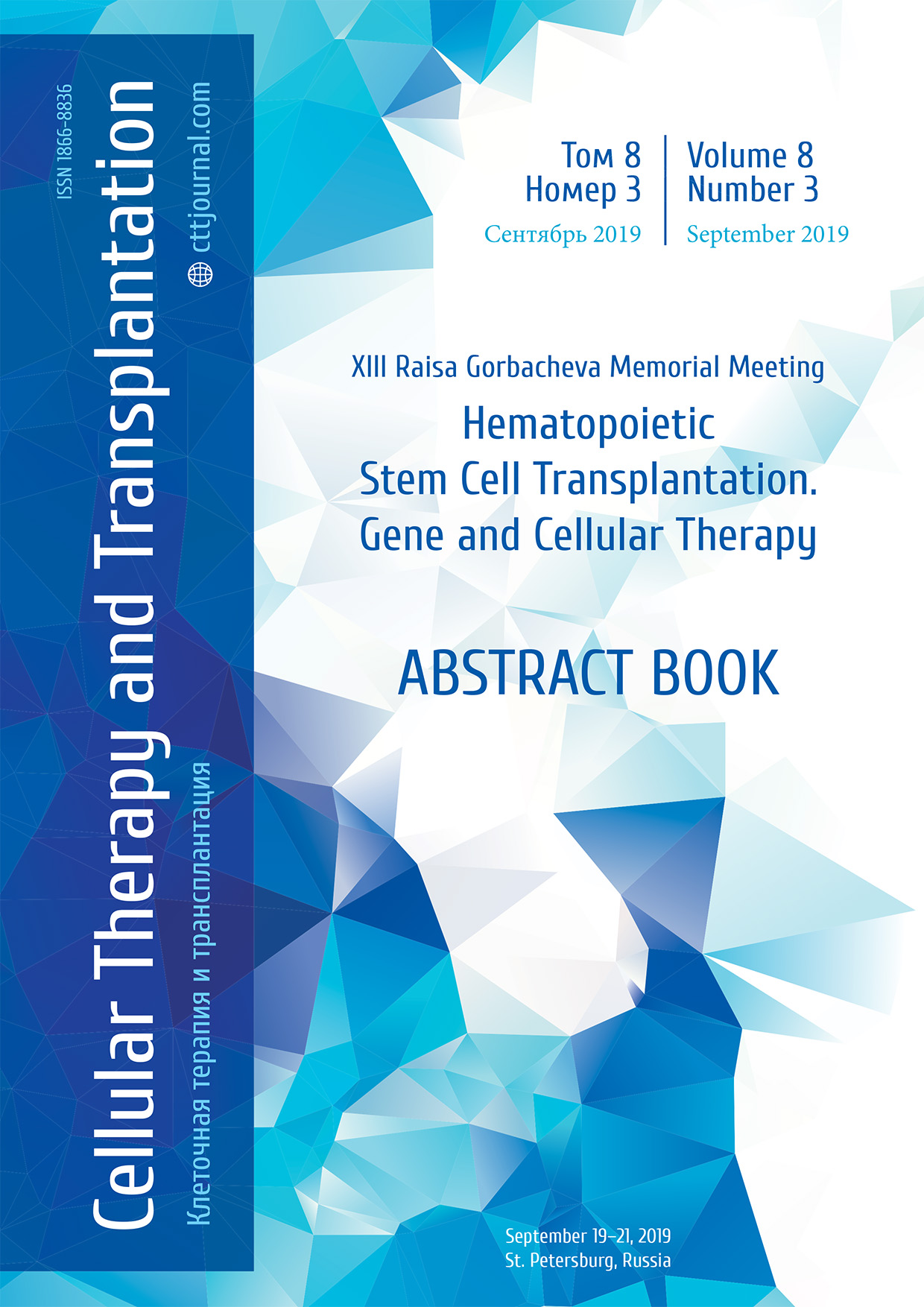Comparison of protocols for mobilization and collection of peripheral hematopoietic stem cells by apheresis
Denis V. Kamelskikh, Mikhail Y. Drokov, Valeriia C. Apartseva, Maxim A. Telyashov, Vera A. Vasilyeva, Larisa A. Kuzmina, Tatyana V. Gaponova
National Research Center for Hematology, Moscow, Russia
Contact: Dr. Denis V. Kamelskikh
E-mail: kamelskih@yandex.ru, apartsevavk@gmail.com
Summary
Growth of allogeneic stem cell transplantations (allo-HSCT) is a global trend. Nowadays two kinds of protocols for a mobilization and cell collecting are practiced in National Research Center for Hematology, which include implementation of apheresis for a cell collecting on the fourth day after stimulation using granulocyte colony-stimulating factor for the first protocol and a cell collecting on the fifth day for the second protocol. The dose of G-CSF is 10 mcg/kg subcutaneously once a day according to the first protocol and 5 mcg/kg subcutaneously twice a day according to the second protocol. The aim of this study was to determine an optimal protocol for mobilization and apheresis of peripheral hematopoietic stem cells for allo-HSCT.
Materials and methods
An efficiency of protocols for mobilization was analyzed retrospectively in 63 donors of allogeneic peripheral blood stem cells. Details are attached in table 1. Statistics and data interpretation was made by the IBM SPSS v.23 (USA). The Shapiro-Wilk test was applied for getting knowledge about the normality of sample distribution. According to the abnormal sample distribution usage of Mann-Whitney U-test took place. Fisher test was used for analysis of contingency tables due to a small sample size. Statistics are presented using a midpoint, minimum and maximum values.
Results
No significant differences were founded in donors’ parameters such as age, sex, height, weight, a circulating blood volume, a count of leukocytes for the first day of apheresis though it was proposed that these parameters would influence on the efficiency of mobilization. However, the higher efficiency of the mobilization using the second protocol (G-CSF 5 mcg/kg subcutaneously twice a day) was shown. This way of mobilization had yielded to collect more CD34-positive cells per one kg donor’s body weight after a procedure of apheresis on the fifth day from the beginning of the mobilization. The results are attached in Table 1.
Conclusion
The study has demonstrated that protocol for the mobilization and cell collecting, which includes use of G-CSF 5 mcg/kg subcutaneously twice a day and an implementation of apheresis on the fifth day, is more effective than the another protocol (G-CSF 10 mcg/kg subcutaneously once a day and an apheresis for a cell collecting on the fourth day after stimulation). The more efficient protocol has made it possible to achieve a larger percentage of CD34-positive cells in a peripheral blood in donors on a day of the first apheresis, a larger percentage of CD34-positive cells in a product of apheresis and as a result an increased quantity of CD34-positive cells per one kg donor’s body weight.
Keywords
Allogeneic stem cell transplantation, hematopoietic stem cells, peripheral blood stem cells, mobilization, cell collecting, apheresis, donor.
Table 1. Comparative results for the tested HSC mobilization protocols



